Abstract
When blood contacts foreign material surfaces, platelets usually adhere and form aggregates on those surfaces, generating mural thrombi. The mechanism of mural thrombogenesis is not completely understood, but one hypothesis states that the local release of certain platelet-active substances from the platelets composing an initial small thrombus stimulates additional platelet recruitment to that thrombus, resulting in growth of the cell aggregate. The purpose of this paper is to investigate the feasibility of this hypothesis. Concentration profiles of adenosine diphosphate (ADP), thromboxane A2 (TxA2), and thrombin were computed in the vicinity of growing model thrombi 10 and 20 micron long. Wall shear rates of 100, 500, and 1,500 s-1 were considered for blood flowing through a thin rectangular slit 200 micron wide coated with collagen, a predominant subendothelial protein. The local concentrations of ADP and TxA2 were marginally large enough to stimulate platelet activation individually, while local thrombin levels can be much greater than required for stimulation. Antithrombin III, a natural thrombin inhibitor, did not significantly reduce the thrombin concentrations, but antithrombin III accelerated by heparin greatly reduced the local thrombin concentrations. The reduced thrombin levels may, however, still be large enough to activate platelets.
Full text
PDF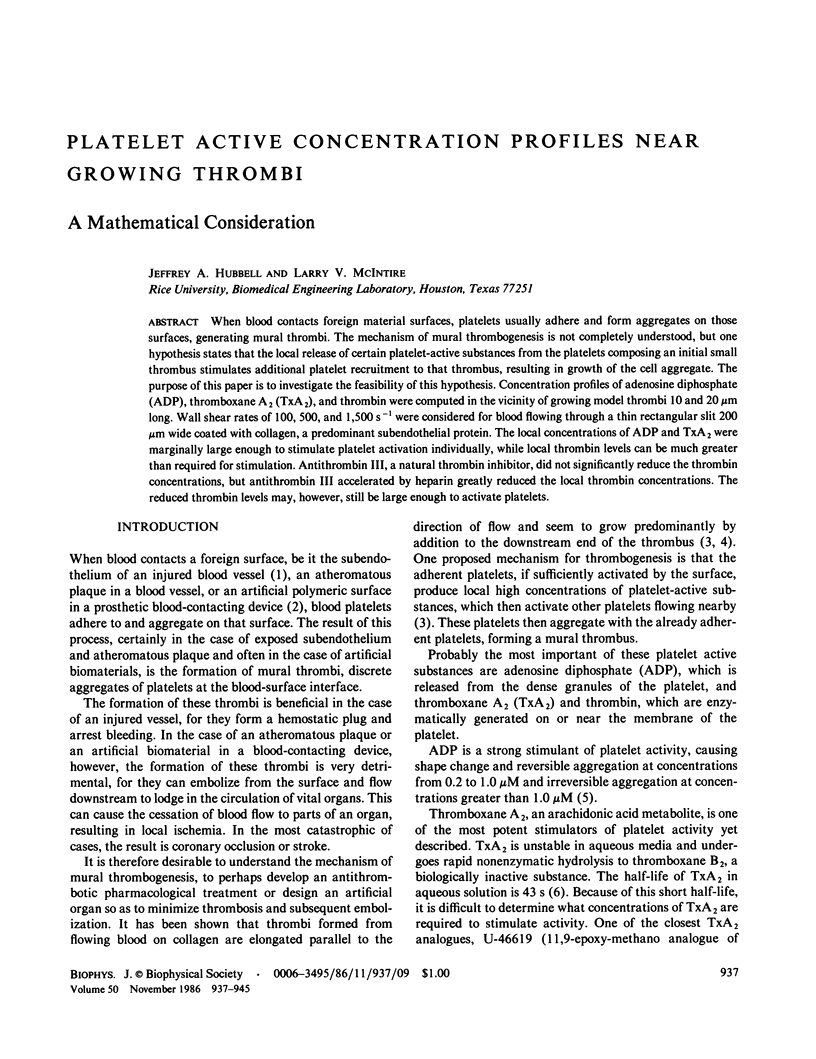
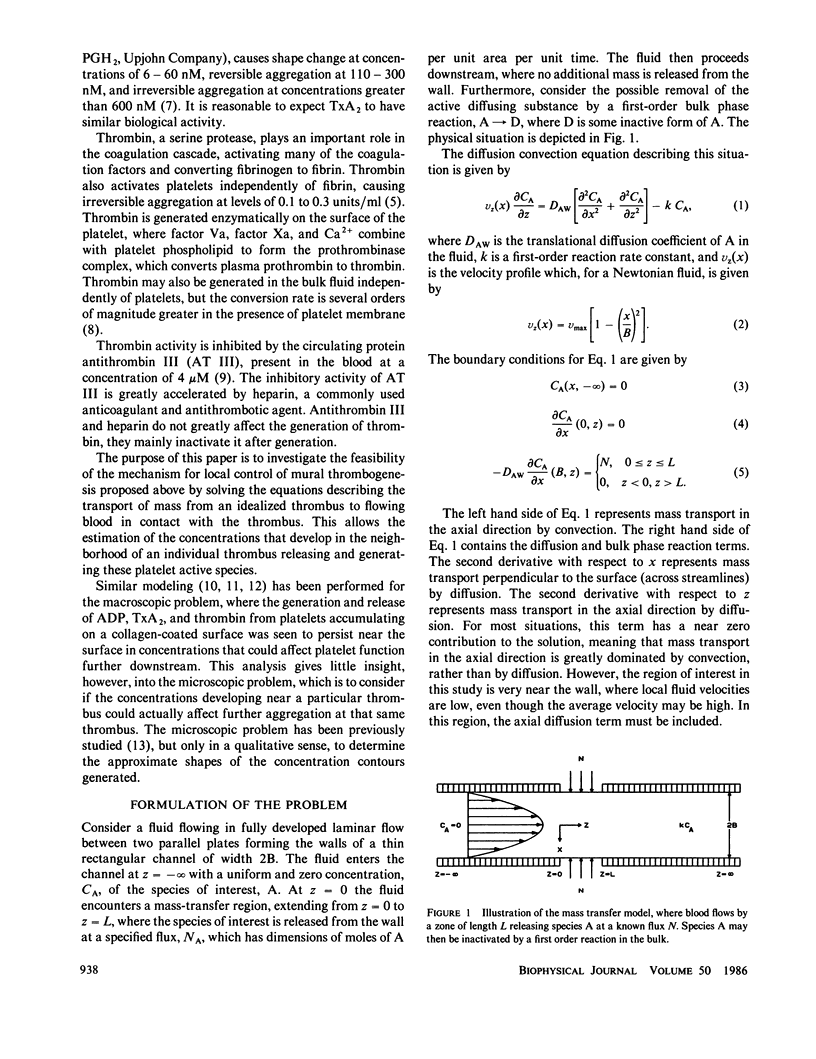
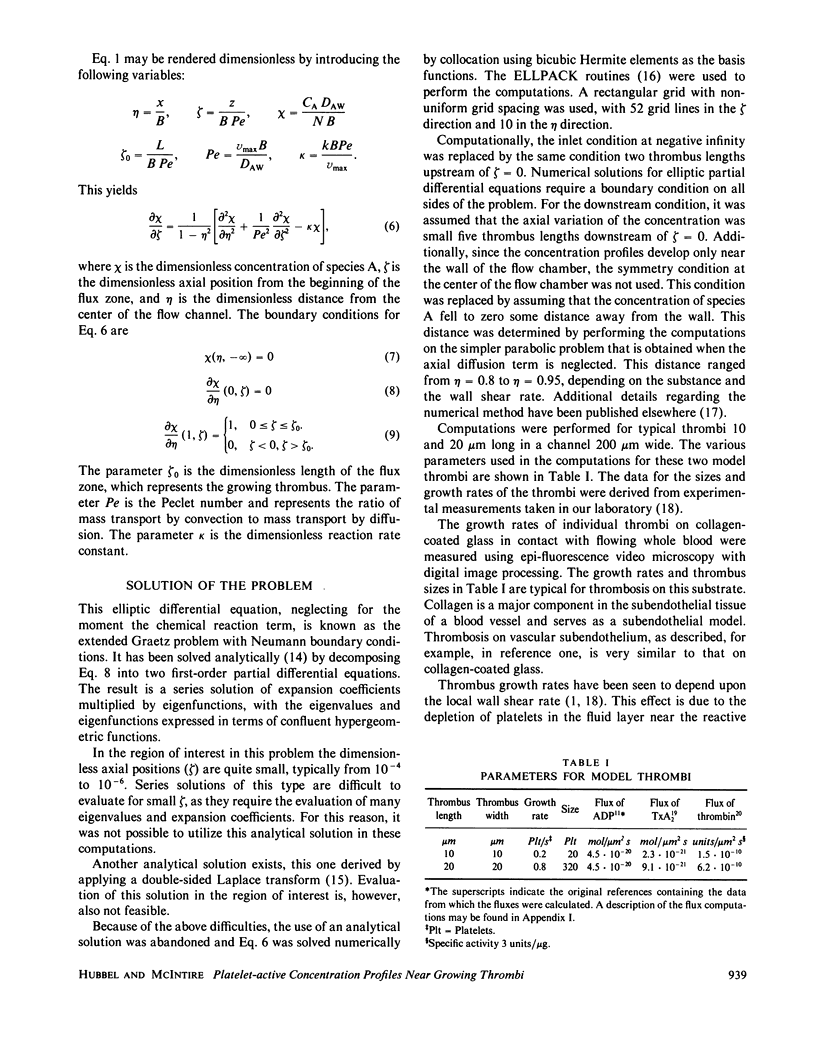
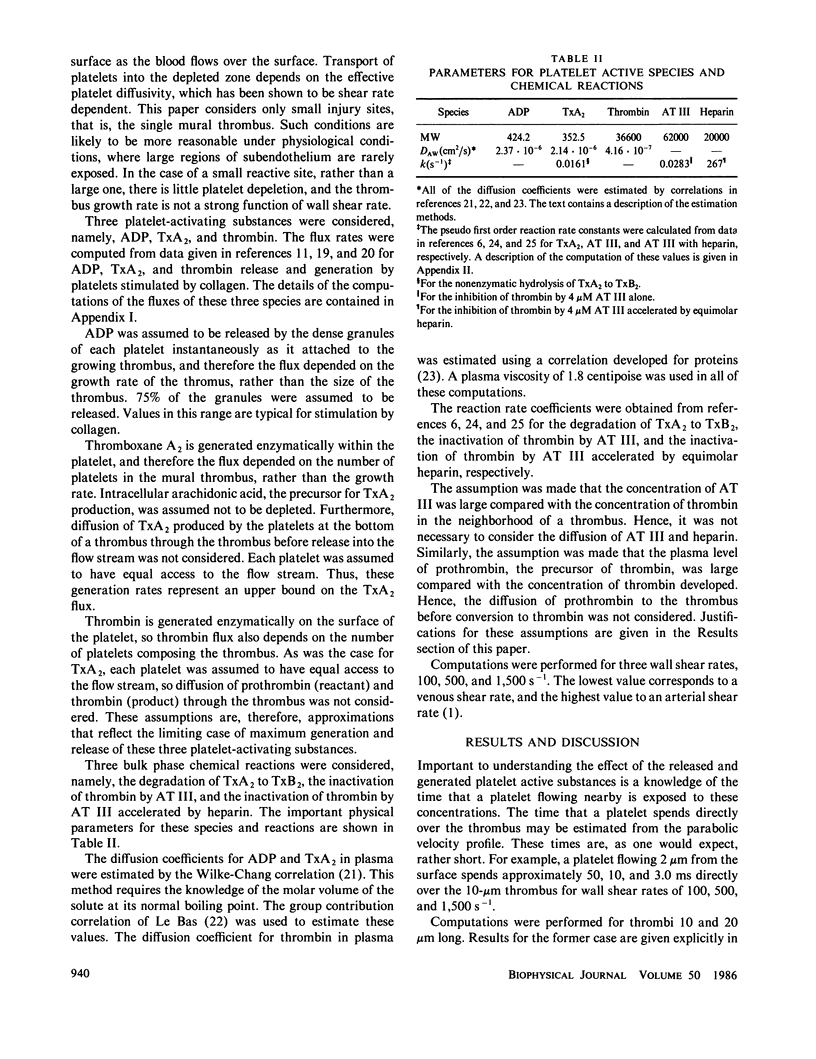
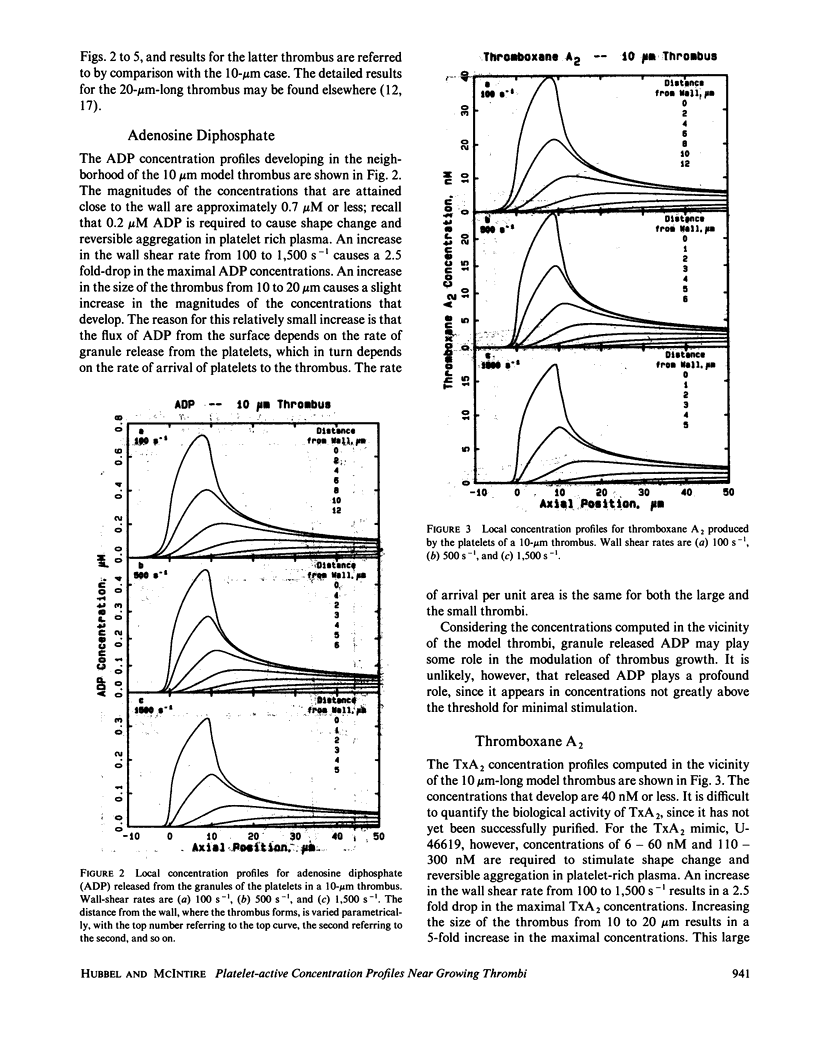
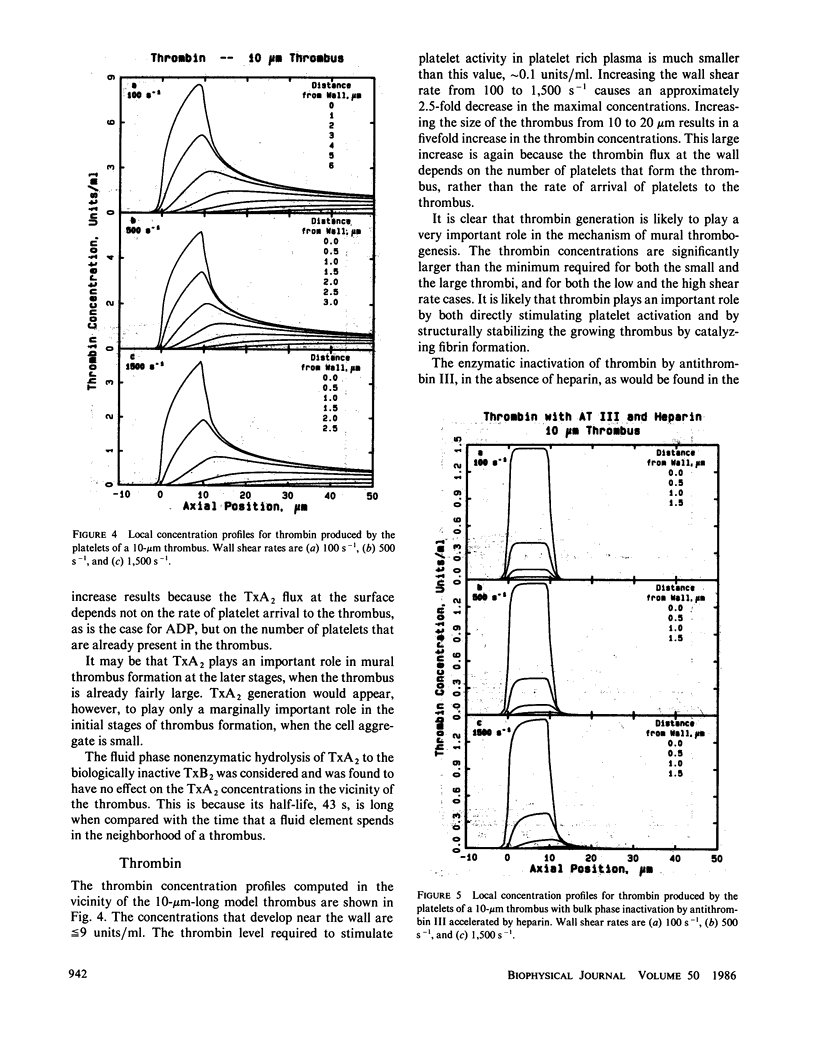
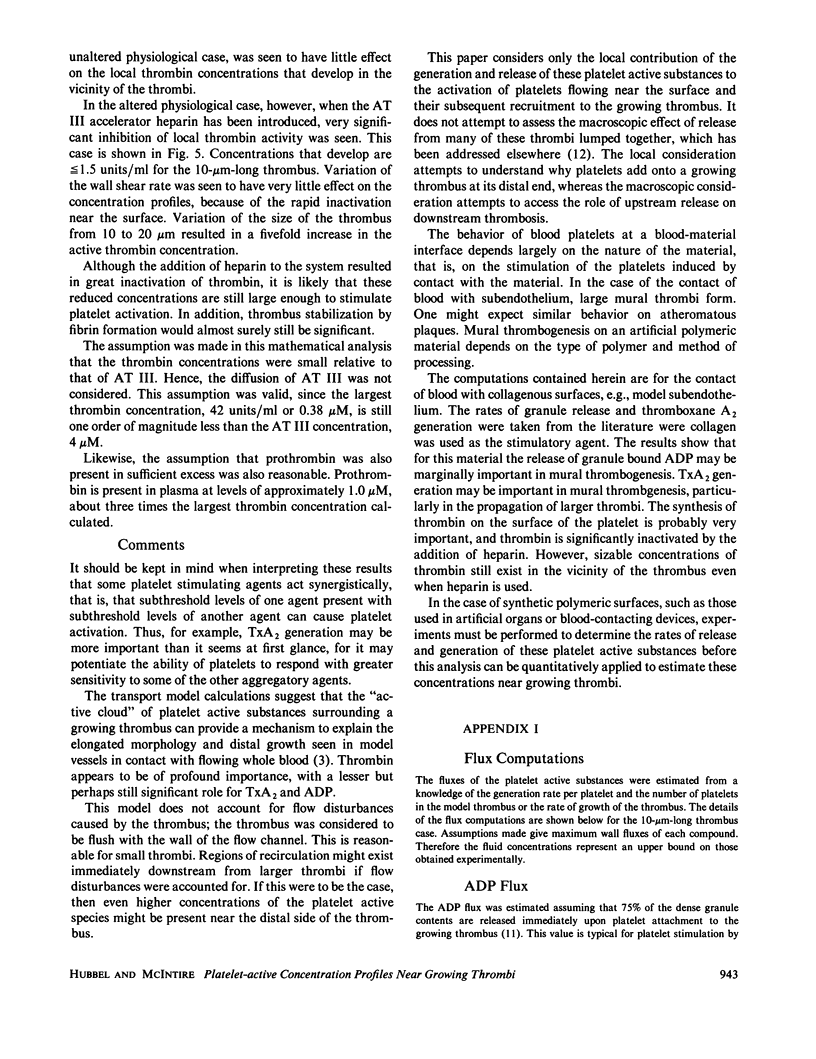
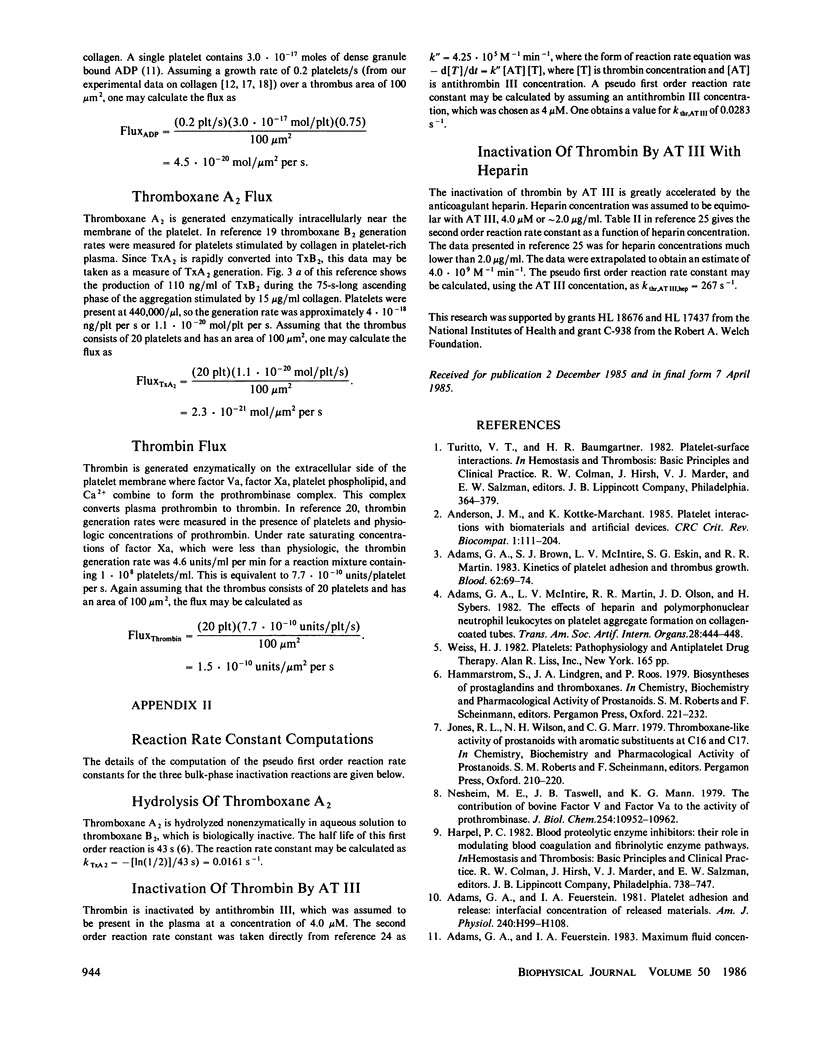
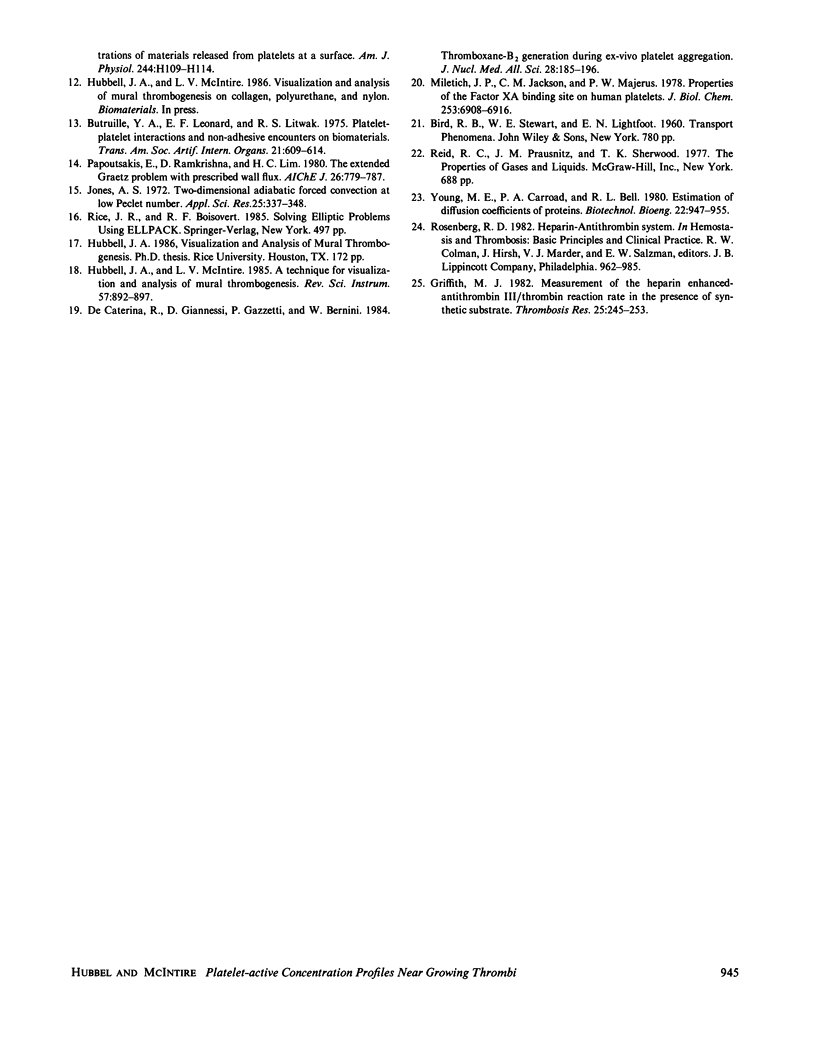
Selected References
These references are in PubMed. This may not be the complete list of references from this article.
- Adams G. A., Brown S. J., McIntire L. V., Eskin S. G., Martin R. R. Kinetics of platelet adhesion and thrombus growth. Blood. 1983 Jul;62(1):69–74. [PubMed] [Google Scholar]
- Adams G. A., Feuerstein I. A. Platelet adhesion and release: interfacial concentration of released materials. Am J Physiol. 1981 Jan;240(1):H99–108. doi: 10.1152/ajpheart.1981.240.1.H99. [DOI] [PubMed] [Google Scholar]
- Adams G. A., McIntire L. V., Martin R. R., Olson J. D., Sybers H. The effects of heparin and polymorphonuclear neutrophil leukocytes on platelet aggregate formation on collagen-coated tubes. Trans Am Soc Artif Intern Organs. 1982;28:444–450. [PubMed] [Google Scholar]
- Butruille Y. A., Leonard E. F., Litwak R. S. Platelet-platelet interactions and non-adhesive encounters on biomaterials. Trans Am Soc Artif Intern Organs. 1975;21:609–616. [PubMed] [Google Scholar]
- De Caterina R., Giannessi D., Gazzetti P., Bernini W. Thromboxane-B2 generation during ex-vivo platelet aggregation. J Nucl Med Allied Sci. 1984 Jul-Sep;28(3):185–196. [PubMed] [Google Scholar]
- Griffith M. J. Measurement of the heparin enhanced-antithrombin III/thrombin reaction rate in the presence of synthetic substrate. Thromb Res. 1982 Feb 1;25(3):245–253. doi: 10.1016/0049-3848(82)90244-4. [DOI] [PubMed] [Google Scholar]
- Miletich J. P., Jackson C. M., Majerus P. W. Properties of the factor Xa binding site on human platelets. J Biol Chem. 1978 Oct 10;253(19):6908–6916. [PubMed] [Google Scholar]
- Nesheim M. E., Taswell J. B., Mann K. G. The contribution of bovine Factor V and Factor Va to the activity of prothrombinase. J Biol Chem. 1979 Nov 10;254(21):10952–10962. [PubMed] [Google Scholar]


